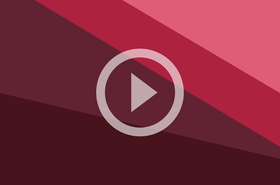There are numerous compelling reasons to consider using liquid cooling – be it in cold plate or immersion format. Chief among these reasons is the potential energy efficiency it can offer and the potential to reuse the heat it extracts for something else. Alternative uses can encompass things such as domestic or business heating, for example, to support growing plants on a farm.
However, the current systems aren’t overly efficient at getting high-quality excess heat out of the facility for sophisticated reuse. There are also major practical challenges to introducing and managing liquid cooling systems, including deploying them alongside their traditional air cooling counterparts.
Data center owners and operators must understand that liquid cooling isn’t a magic wand that will put an end to all cooling problems. They need to be fully versed in the challenges of implementing and running this type of system, its limitations, and how other tools – including data center digital twins – can support its introduction and management. So, let’s dive in.
The psychological barrier to introduction
Liquid cooling has widely been used to cool compute equipment since the 1960s. This historical use presents a psychological barrier to using these systems today. The simple reason? Liquid leaks don’t mix well with electricity. The repercussions are clear and serious. Historically, there were greater plumbing problems associated with liquid cooling systems than there are today. This is because everything used to be physically plumbed in. Whereas now there are dripless quick connectors which make the systems less risky. As well as negative pressure systems, which mean that even if there was a leak, fluid wouldn’t get out into the data center, as it works off suction rather than being pushed by a pump. Regardless of the fact these issues were resolved over time, or other concerns around liquid use were baseless to start with, the repercussions are the same – people are apprehensive about using liquid systems. This is beginning to change, although it’s not the only barrier to introduction.
Integrating liquid cooling into an air-cooled facility
For legacy data centers, integrating liquid cooling into an air-cooled facility isn’t easy. With both in place, you have complex flow networks and quite sophisticated air-cooling systems that must work together seamlessly. This is a major challenge as there’s a risk that by introducing liquid cooling, you could undermine the air-cooling system. This is because you could end up with the air not coming out very hot, or being cooled, and if that goes back into the air-cooling system it will become highly inefficient.
Liquid cooling increases operational complexity
Even when not combined with air systems, liquid cooling presents unfamiliar and more complex challenges for installing equipment. In a liquid system, operators will need to make fluid connections, as well as electrical ones, so more is required to change things operationally. If you’re talking about an immersion system, you’re taking your computer and submerging it in a bath of mineral oil or an equivalent. Operationally, this is very different from something that sits in the air and gets plugged in. There is a whole gamut of additional things that you have to worry about, and this brings us to our next challenge.
The liquid cooling playbook is currently immature
In principle, an immersion cooling system could carry 100 percent of the heat away from the chip and into the water. On this basis alone, it seems like the perfect answer to a data center's cooling needs, but it isn’t a flawless solution. Within this model, operators grapple with material incompatibility.
When electronics are submerged in an immersion bath, everything is exposed to that coolant. As a result, over time, some of the different, solid materials that make up the electronics can leach out into the liquid. For example, if you had an insulated wire, there could be a chemical reaction between the plasticizers in the insulation and the fluid, causing it to break down and become brittle. This material incompatibility ultimately affects the lifespan of equipment.
In addition, in an immersion system, heat is taken away from the chip through buoyancy-driven flow, not forced convection. This means you’re likely to be limited to lower power densities. As chips get increasingly dense, we may get to a point where immersion cooling can’t take that heat away effectively in a buoyancy-driven scenario.
The alternative to immersion cooling is cold plate technology, but this too, is imperfect. For example, there are challenges associated with the coolant deteriorating the performance of the cold plate over time. If the quality of the coolant used isn’t high enough, it will cause deposits and corrosion inside the cold plate. This will reduce the heat transfer and make the cooling system ineffective. What’s more, as the resistance between the heat in the chip and the heat getting into the fluid increases, the temperature of the chip will rise, resulting in thermal issues and diminished chip performance.
In addition, it’s not possible to extract anywhere close to 100 percent of the heat with cold plate technology because the channels that remove the heat cannot be used on all components. Let’s say you can take out 80 to 90 percent, this is by no means an insignificant amount, but if you have a 50kW rack, there’s still five to 10kW of heat going into the air. This limits the capabilities of the racks and means you end up with a similar capacity to what you had in traditional air-cooled data centers. It also poses the question of what will happen with the excess heat from the liquid-cooled equipment in a failure scenario, and there’s no easy answer to this.
As neither cold plate nor immersion technology is in widespread use, it’s far from easy for data center owners and operators to balance the challenges both present and decide which system should be adopted and which fluid used within this. In the short term, it’s likely cold plate technology will be adopted more readily as it’s easier to implement and doesn’t require electronic immersion. However, we can’t say for certain that this is the technology that’ll win out. At present, the liquid cooling playbook isn’t mature enough to tell.
How digital twins can help
Regardless of which form of liquid cooling (or indeed any type of cooling) each facility adopts, a data center digital twin – a 3D virtual replica of a physical facility – can facilitate its deployment and management. The technology offers visibility into what you can’t otherwise see or measure, including cooling.
For example, they can empower operators to test out the benefits or drawbacks of different cooling systems and scenarios before they’re implemented in the real world, including analyzing how much liquid cooling to use and where. In addition, if these systems are already in place, they enable the operator to establish how to make them more efficient. Moreover, they can be used to understand how potential deployments could impact the cooling system. This prevents it from becoming undermined, resilience risked, IT slowing down, and capacity lost as a result.
Promising, but not magic
The rise of liquid cooling won’t mean we never have cooling problems again. There are challenges with both cold plate and immersion systems and ASHRAE has already introduced lower-temperature water classes because of the power densities in some of the modern chips. Data center owners and operators need to recognize that technology is moving forward and even in a liquid cooling scenario, there are limits to how much power you can take away per centimeter squared of chip. However, the systems are promising, and digital twins can play a key role in helping to weigh up which scenario best suits each data center’s needs, as well as how to deploy and manage them.







